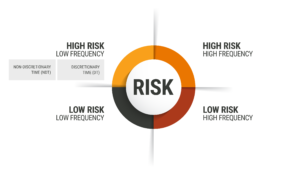Editor’s note: This article is part of a series. Click here for the previous article.
Hello again and thanks so much for taking the time to read this brief piece in my continuing series of ramblings on risk management in public safety operations. The last article started the conversation about what can go wrong when good people get involved in high-risk, low-frequency events. My closing comments dealt with a 1980s issue, when law enforcement started the transition from revolvers to semi-automatic handguns.
I mentioned this during a law enforcement program in Indiana and I saw a lot of nodding and heads turning. It was—how do I say—a “clue” that the Hoosier State has the same problems as the other 49 states.
But please do not think my concern about high-risk/low-frequency events is limited to law enforcement operations. I also worry about firefighters who get involved in commercial airplane tragedies. Following my program in Indianapolis, I headed to the Dallas Fort Worth airport. DFW is so huge that to meet the “mandated maximum response time” in the event of a plane crash, they have five fire stations on the airport property.
Every time you give your people a new piece of equipment, a new vehicle, a new weapon, a new tool, a new whatever, for a while they will be playing in the “top left box”—and you and they need to be aware of the risk and take appropriate precautions.
My guess is that not one of the fire service personnel on duty there when I landed had experience responding to a plane crash. This scenario manifested at San Francisco International Airport some five years ago when Asiana 214 missed the runway and broke in many pieces, and people ended up dead. How they died is an interesting story. You can look at this event on Wikipedia—and read the entire Wiki piece; it is worth the time.
Hey, speaking of planes—how did John Denver die? (You young kids might have to Google that name.) Indeed, he was a long-time pilot with thousands of hours, but he was flying a plane he was not familiar with that had a very unusual fuel supply configuration, which caused him to lose control of the plane while attempting to switch fuel tanks. “Mr. Rocky Mountain High” (and he had a problem with the “high” part, with a couple of DUI arrests and a couple of DUI crashes; in fact because of this the FAA yanked his ticket to fly) was playing in the “top left box.”
For those of you who didn’t get a chance to read the last article, “playing in the top left box” refers to engaging in high-risk, low-frequency events. It comes from the following diagram:
Let’s move to another issue of concern—medical malpractice. Doctors and hospitals kill a lot of people. The number-three cause of death in the United States (right behind heart and cancer issues) is medical malpractice. In my live programs I often point out that your average American is safer dealing with a psycho cop at midnight than they are going to see a doctor!
On my recommended reading list is a great book about this topic, Unaccountable by Dr. Marty Mackary. In this book Dr. Mackary reintroduced me to a doctor I had forgotten all about over the years—Dr. Michael DeBakey. Everything the world knows about heart surgery started in Texas with Dr. Debakey. Not only was he a great MD, he was also an inventor, developing all sorts of new tools to help doctors do their job.
He got so good at what he did that Time magazine declared him “Doctor of the Year” in the mid-60s. Fast-forward 15 years and the Shah of Iran has a liver problem. He calls the U.S. State Department to request an American doctor perform his liver surgery because he did not trust his Iranian MDs. You guessed it, the Shah wanted the famous Doctor of the Year to do his liver surgery. Unfortunately—you are way ahead of me now—heart surgeons doing liver surgery falls into the “top left box”—and a mistake was made and the Shah ended up dead.
So why am I boring you with this? Please remember: Every time you give your people a new piece of equipment, a new vehicle, a new weapon, a new tool, a new whatever, for a while they will be playing in the “top left box”—and you and they need to be aware of the risk and take appropriate precautions.
Every time your people get involved in high-risk, low-frequency activities, they are much more likely to make an error. To be fair, not every error will generate a tragedy, but if you make enough errors, sooner or later all the holes in the Swiss cheese will line up. (If you are not familiar with this concept, take the time to Google “the Swiss cheese model.”) When that happens, you will have the “triggering event” (proximate cause) and then the tragedy will occur.
So where are we headed with this? Your mission, Jim, should you choose to accept it, is to study every job description in your public safety agency and identify the events that fall into the “top left box” in that given job. How to do this will be our focus in our next visit together.





